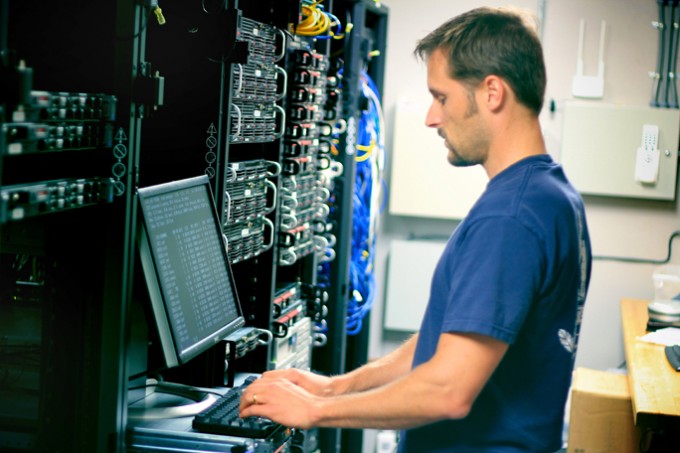As many organizations and human resource departments adjust to the abrupt changes resulting from COVID-19, many employees who can work from home are adjusting to becoming remote workers.
For some, the transition is somewhat seamless, but others may need some guidance. One challenge that many remote workers face is staying connected to one another. Among those who work remote, 80 percent wish their colleagues would reach out to them more often1 and 19 percent report feeling lonely2.
While we live in a time when we are more “connected” than ever, the sense of uncertainty that many of us are feeling can actually increase feelings of disconnection from others. However, we can use technology to bring us together and keep us socially connected as we work remotely.
For the past 10 years, I’ve been a remote worker and leader at Inspirus. I was the first non-sales employee to work remotely for the company. In the early years, I was definitely challenged by feeling “out of sight and out of mind.” To remedy this, I taped my name and phone number to the conference room tables so colleagues could easily contact me. As video conferencing has become more popular, this has become my go-to for hosting meetings with my team, as I can see them “in person,” in real-time.
Here are three of my favorite ways to use technology to stay connected with and recognize my team and colleagues.
1. Check in
Establish a regular cadence to connect with your team and each individual employee. A daily team check-in meeting on Skype or Microsoft Teams can be a great way for everyone to start their day and discuss upcoming projects, identify any roadblocks or just socialize for a few moments. It can be a mix of professional and socializing to help build rapport and connection when your team is remote. As an ice breaker, always have a thoughtful or fun question ready to ask your team. At least once per week, take time to recognize your team for going above and beyond, helping their coworkers, or for life events like birthdays or service anniversaries.
It’s just as important to check in with individual employees at least a couple of times per week. Establish a cadence works best for each of you and which type of technology is best to use, whether it be video conferencing or instant message. During your one-on-one meetings, determine what projects they are working on, any challenges they may be facing and if there’s any way you can support or find a solution. This is also a great time to recognize your employees individually in-real time or take time to find out ways they would prefer to be recognized virtually. While a handwritten note is often appreciated, an e-card can be a great alternative to provide a timely, personalized message of recognition to your remote employees.
2. Collaborate
When members of your team work remotely, the ability to collaborate efficiently is a necessity in order to keep all team members in communication and on the same page. Instant messaging platforms like Slack or Microsoft Teams can keep multiple team members who are working on a project communicating in real-time. They can also share files, images, or screenshots of a project to keep tasks moving forward as they converse. Another great tool for collaboration is a virtual white board, like MURAL or Miro, which can be used by your entire team to remotely brainstorm, iterate and work on multiple projects together at the same time.
When your team is working together remotely, it’s also important to promote peer-to-peer recognition among your team. Encourage your team to recognize and thank others while collaborating. Once a project is complete, they can send a quick thank you e-card with a detail or two about how the recipient specifically contributed to the project through your organization’s engagement platform. When your employees take time to recognize one another, it builds a strong rapport and helps everyone to feel a sense of belonging to the group, which is essential now more than ever with so many people working remotely.
3. Stay visible
When you are leading remotely, it’s important to make yourself available and visible to your team and colleagues. Participate in group chat room discussions, regularly schedule check-ins with your team and colleagues to have an open conversation about whatever topic they’d
like, work-related or not, to help build the much-needed sense of community throughout your organization.
When participating in video conference meetings, don’t hide behind the screen. Use the camera feature so that your team can see you “in person” because being able to see everyone and interact is a definite pick-me-up for those working from home. Use this face-time as an opportunity to also give verbal recognition to your team and colleagues. When an individual hears and sees you providing recognition for a job well done, it can lift their spirits and give their day and added boost. If your organization’s engagement platform or communication tools include a video feature, think about recording a 60-second video to commemorate colleagues for their birthday or service anniversary. Including details about how their unique contributions help to make your organization better and can be a great memento that they will truly appreciate.
As your workforce adjusts to the many changes that are taking place, it’s more important than ever to uplift one another with recognition. Now is the time to leverage your organization’s technology platforms to create a positive space to recognize your team and ensure everyone feels connected.
1 Workplace Trends, The Work Connectivity Study, 2018
2 Buffer, State of Remote Work, 2019
Latest posts by Theresa Harkins (see all)
- How Technology Can Foster Recognition In The New Work Reality - November 17, 2023













